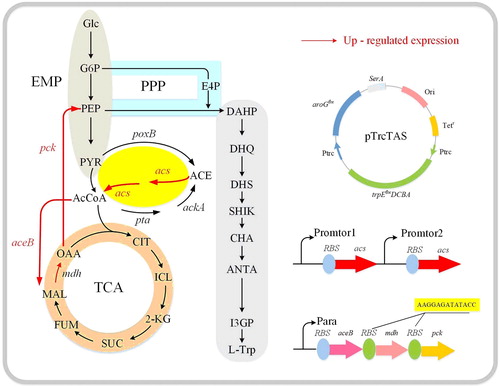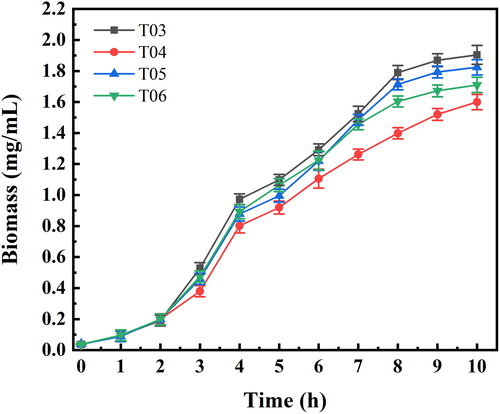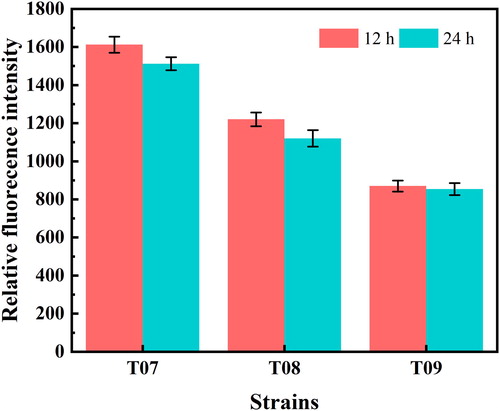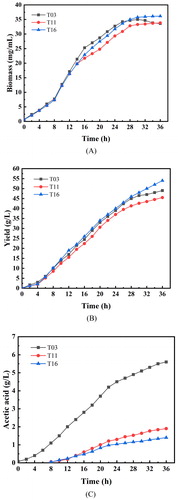Figures & data
Table 1. The strains and plasmids used in the experiment.
Table 2. Primers used in study.
Table 3. Apparent kinetic constants determined for the ACS of the different strains.
Figure 4. Relative transcriptional level of acs (A), pta and ackA (B), cell growth (C), tryptophan yield (D) and acetic acid (E) production after shake flask cultivations of the different E. coli strains.
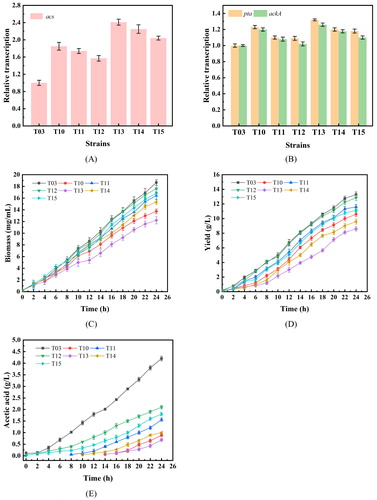
Table 4. Results of shake flask cultivations of the different E. coli strains.

